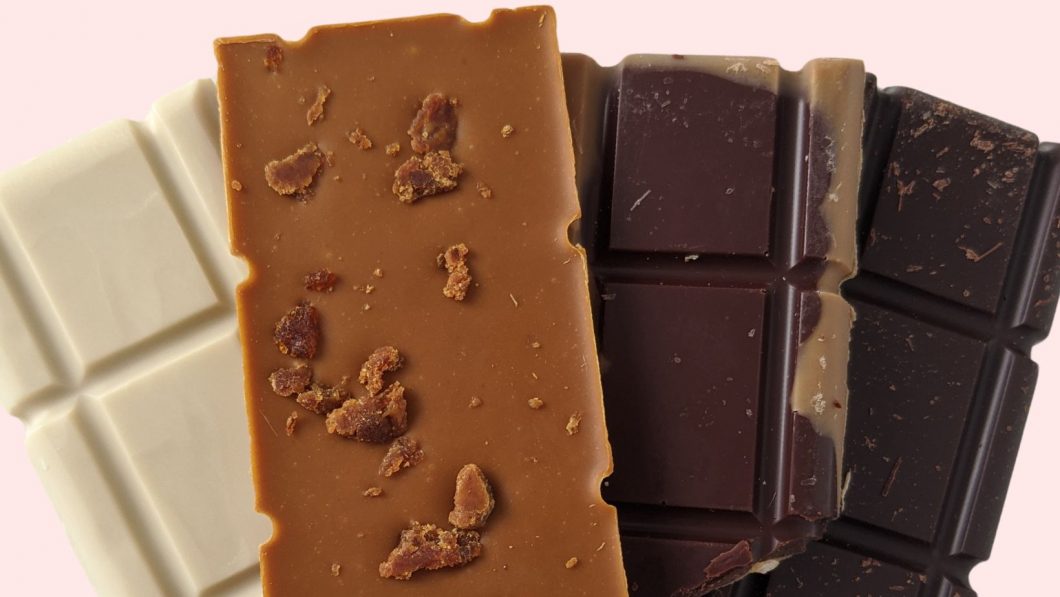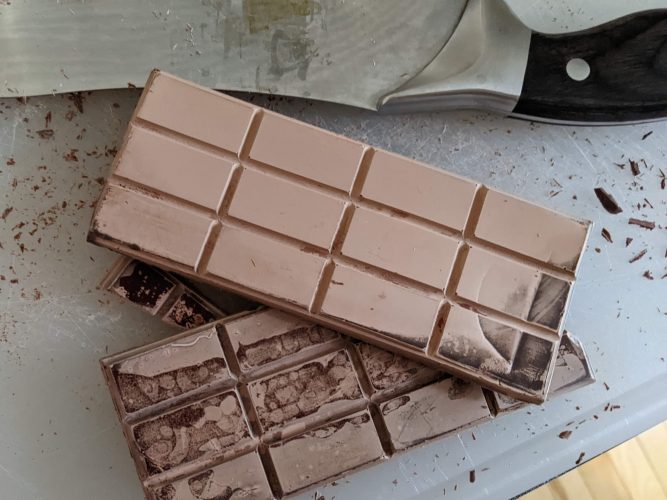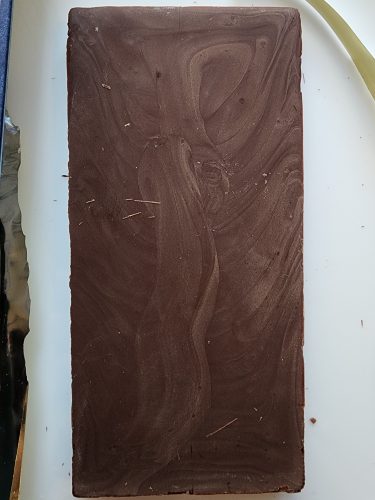A huge part of starting in bean to bar chocolate is learning how to taste, in fact ideally you learn it as part of trying your first bar. But less discussed is why we taste the way we do, and I think understanding the why is just as important and honestly makes things more fun. So let’s dive in! (Though as a heads up this will briefly mention alcohol.)
First, just in case, here’s a blog post covering how to taste bean to bar chocolate, and here’s a super quick overview of the steps of tasting:
- Open the wrapper and check that the chocolate bar’s in temper (shiny, nice snap when you break it)
- Smell the chocolate
- Take a bite, letting the chocolate melt instead of chewing
- Note the flavors as they change
Which yeah that’s way more work than ‘open wrapper, eat.’ It’s far closer to doing a wine tasting, and I do think folks kinda associate it with being snobby partially because of that, but I like to think of it more as the building of a practice. Like once you know the steps this all goes really fast, I can do a home tasting in about 30 seconds and a full evaluative tasting in a couple minutes.
So from that, I’d argue there are two reasons for why you should know how to taste: the industry expects you to, and the chocolate benefits from it.
The makers are making chocolate for folks who know how to taste chocolate
Which sounds obvious once you see it written, but it really does impact everything here. Like okay, you wouldn’t think to taste Hershey bars like you would bean to bar chocolate, but also mainstream chocolate’s made to be eaten like a snack bar. And honestly if you try to eat mainstream chocolate the way you eat bean to bar chocolate, it mainly highlights the lack of flavor present in the base chocolate. Like if you want to see a bit of that in action, here’s me eating some of my once favorite mainstream chocolates:
In contrast, the average bean to bar maker is going in making bars for an audience that’s assumed to either already know how to taste or will get that education likely as part of getting that bar. And in the past that was more guaranteed, as you were likely to either get a bar from a friend who would hopefully lead you through a tasting, or at a bean to bar shop who wouldn’t let you leave without making sure you knew how to taste chocolate. Nowadays with more folks getting their first bars/bar recommendations online, it’s not as guaranteed that you get that early education and that’s been a real challenge. (I do think it’s worth walking through your first tasting with someone if possible, whether in person or on a Zoom call, but if you can’t, use my guide or any guide online that resonates with you!)
The chocolate benefits from proper tasting
Like okay, let’s start from the top: checking for temper. Stopping and doing that is critical, because if your bar’s out of temper and you eat it, you’re almost certainly going to have a bad time. Regardless of why it’s not shiny and/or not snapping well, whether from partially melting, fat bloom, sugar bloom, and/or just being really old, it just won’t taste very good. Most likely it’ll just taste muted or flat, but it definitely won’t taste good. So I’d check the expiry first – if it’s plain dark chocolate that’s more flexible, likely the bar will be good a few months after the expiration date, but inclusion bars (chocolate with stuff mixed in) and truffles and confections have shorter lifespans, sometimes as short as two weeks. This is also why I usually recommend you eat that bar sooner rather than later, so that you don’t risk any of these issues, or at least can catch them sooner.
Bloomed chocolate: great hot chocolate or baking chocolate, not a great bar to eat plain.
(And yes some bars just will not have that snap, like many gianduja and brown butter bars, along with a lot of inclusion bars. But if a plain chocolate bar doesn’t snap you’ve got Problems.)
Next, smell. Not smelling much at all can be okay, especially if it’s cold out and you didn’t warm the bar with your fingers first, but if it doesn’t smell good, yeah you’re probably not going to like it.
Finally, taste. We let the chocolate melt as opposed to chewing thanks to the melt rate of tempered cocoa butter in the chocolate. All chocolate bars contain some amount of cocoa butter, and cocoa butter melts at about body temperature, so it needs time to warm up in your mouth before that flavor gets fully expressed. If you don’t let it melt you’re losing out on a lot of that flavor, and it can make things taste way, way bitter.
This doesn’t mean you can’t chew at all, in fact I normally will break the bar with my teeth once or twice if the melt rate feels off. Just take your time as best you can.
—
So I hope all that helps with understanding a bit more about why we taste chocolate the way we do! And if you want to check it yourself, I’d highly recommend trying both ‘normal’ and full tastings with a bar you like, though definitely do a full bean to bar tasting first so it’s less bitter. It’s really surprising to me just how much a bar can change from how you taste!



